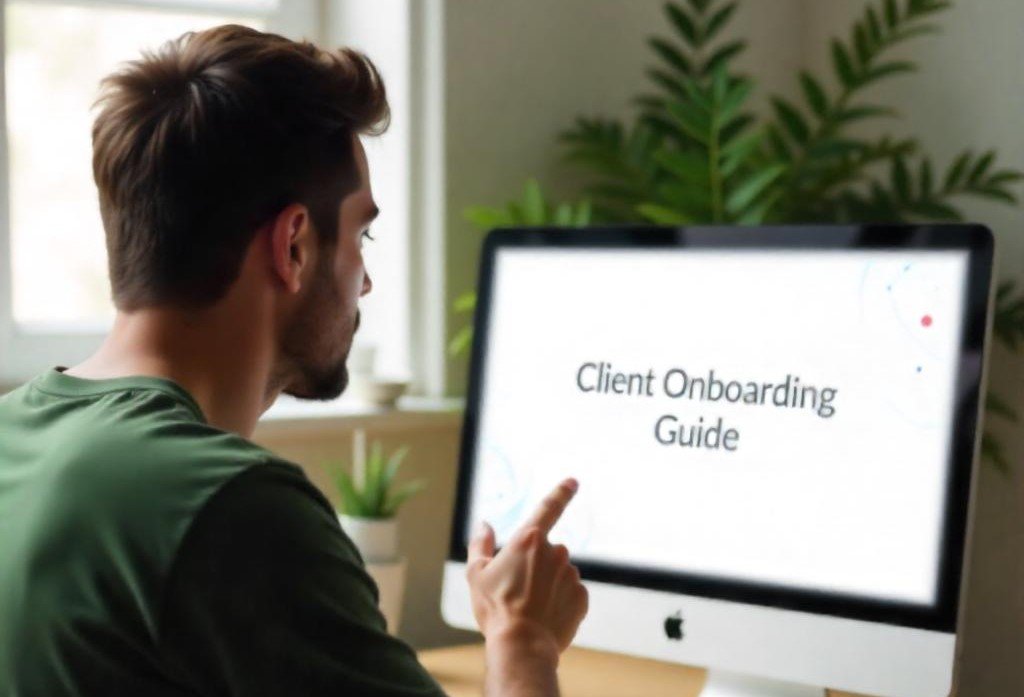Client Onboarding for Freelancers: Step-by-Step Guide
Client Onboarding for Freelancers: Step-by-Step Guide
Why Client Onboarding Matters for Freelancers
Client onboarding is one of the most important stages in any freelancing business. It sets the tone for the working relationship, helps clarify expectations, and ensures that both you and your client are aligned from the start. A smooth onboarding process can lead to successful collaborations, repeat business, and referrals, while a disorganized one may cause confusion and missed opportunities.
As a freelancer, your ability to manage this process efficiently directly impacts the quality of service you deliver and your business’s growth. In this blog, we’ll walk through a step-by-step guide to creating a seamless client onboarding process that will help you gain trust and keep clients coming back.
1. Initial Contact and Setting Expectations
Why It’s Important:
The first step in client onboarding is establishing communication. During this phase, you must set clear expectations and build a strong foundation of trust. Transparency is key—be upfront about your working process, timelines, and pricing.
Steps to Follow:
- Initial Consultation: Have an introductory call or meeting to discuss the client’s needs, goals, and expectations. This gives you a chance to ask questions and clarify any doubts about the project.
- Set Clear Expectations: Make sure both you and the client understand the project scope, deadlines, and deliverables. Communicate your working hours, preferred communication channels, and response times.
- Agree on Pricing and Payment Terms: Discuss your rates, payment terms, and any potential additional costs. It’s best to have this in writing to avoid future misunderstandings.
Tip: This is also a great time to ask for any necessary documentation or background information that will help you complete the project.
2. Create a Contract or Agreement
Why It’s Important:
A well-written contract is essential for both you and your client. It protects your interests and ensures that both parties are on the same page. Having a contract in place prevents disputes down the line and makes it easier to resolve issues if they arise.
Steps to Follow:
- Outline the Project Details: Your contract should include the scope of the work, timelines, payment terms, and deliverables.
- Specify Rights and Ownership: Clearly define who owns the work once the project is complete. This prevents confusion later, especially regarding intellectual property.
- Include Confidentiality Clauses: If necessary, include confidentiality clauses that protect sensitive information.
- Use a Template: Save time by using a contract template that you can easily customize for each client. Tools like HelloSign or DocuSign can help you send and sign contracts electronically.
Tip: Having a contract builds trust with your client and ensures professional boundaries are respected throughout the project.
3. Send Welcome Materials and Onboarding Documents
Why It’s Important:
Your welcome materials and onboarding documents will give your client a clear idea of what to expect during the project. This is a great way to demonstrate your professionalism and organization, while also helping your client understand your workflow.
Steps to Follow:
- Create an Onboarding Packet: This should include an overview of your process, a timeline of key milestones, and any tools or platforms you will use for collaboration.
- Gather Client Information: Have your clients fill out forms that provide all the necessary information you need, such as project details, branding guidelines, or specific requirements.
- Introduce Tools and Platforms: If you’re using project management tools like Trello, Slack, or Asana, this is the perfect time to introduce them to the client and ensure they understand how to access and use them.
Tip: Provide clear instructions on how to communicate with you, where to track progress, and how to send feedback. This makes it easier for both of you and ensures smooth communication throughout the project.
4. Begin the Work with Regular Check-ins
Why It’s Important:
Regular communication during the project phase ensures the client is always up-to-date on your progress. It also gives you the opportunity to address any concerns or adjustments early on, preventing larger issues from developing later in the project.
Steps to Follow:
- Set Regular Check-in Times: Agree on when you will send progress updates, whether it’s weekly, bi-weekly, or after reaching specific milestones.
- Request Feedback: Use these check-ins to request feedback on your work and make necessary adjustments. This helps avoid major revisions later in the project.
- Be Proactive: If you anticipate delays or challenges, address them early to manage client expectations.
Tip: Use these check-ins as an opportunity to reinforce your value by showing your expertise and dedication to delivering quality work.
5. Final Delivery and Closing the Project
Why It’s Important:
The way you deliver the final work and close a project plays a big role in client satisfaction and long-term relationships. This phase is where you solidify your reputation as a professional freelancer.
Steps to Follow:
- Provide Deliverables in the Agreed Format: Ensure that all files are organized and sent in the format agreed upon in the contract. Make it easy for the client to access and use your work.
- Send a Final Invoice: Once the project is complete, send a final invoice that includes any remaining balances. Ensure that payment terms are clear and easy to follow.
- Request Feedback and Testimonials: Ask your client for feedback on the project and how the process went. Positive feedback can lead to referrals, and testimonials can be used to build your portfolio.
- Follow-Up: Send a follow-up email thanking your client for their business and express your willingness to work together again in the future.
Tip: A positive closing experience can lead to repeat business, referrals, and long-term relationships.
Conclusion: Client Onboarding Done Right Leads to Long-Term Success
Client onboarding is an essential part of every freelancer’s business. By setting clear expectations, using contracts, and maintaining regular communication, you can create a smooth process that leads to happy clients and successful projects. Whether you’re just starting or looking to improve your current process, these steps will help you lay the foundation for lasting professional relationships.
Related Blogs:
- How to Package Your Freelance Services for Quick Client Approvals
- Why Most Freelancers Struggle and How to Fix It
- Freelancing Isn’t a Side Hustle—It’s a Business. Here’s How to Treat It Like One
By following this client onboarding process, you’ll not only streamline your workflow but also create a strong foundation for building lasting relationships with your clients. Happy freelancing.






